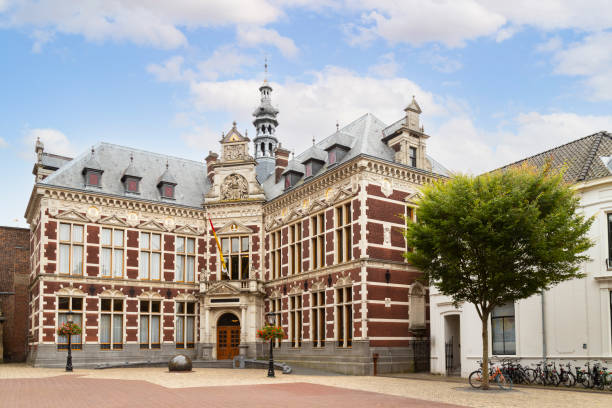Utrecht University: A Legacy of Academic Excellence and Innovation Since Its Founding in 1636, Netherlands
Utrecht University, established on March 26, 1636, stands as one of the Netherlands' oldest and most prestigious institutions of higher learning. Its inception marked a significant milestone in the academic and cultural development of the city of Utrecht and the broader Dutch Republic.

Early Aspirations and Foundation
The idea of founding a university in Utrecht dates back to 1470 when city officials first proposed the establishment of such an institution. However, it wasn't until the 17th century that this vision materialized. In 1634, the Illustrious School of Utrecht was established, serving as a precursor to the university. Two years later, on March 26, 1636, this school was elevated to university status, officially founding Utrecht University. The inaugural address was delivered by the esteemed theologian Gisbertus Voetius, who played a pivotal role in shaping the university's early academic direction. Bernardus Schotanus, a professor of law and mathematics, was appointed as the first rector magnificus, overseeing the institution's initial development. Notably, Anna Maria van Schurman, a pioneering female scholar, became the university's first female student and contributed a Latin poem for the inauguration ceremony.
17th Century Growth and Challenges
In its formative years, Utrecht University comprised four faculties: philosophy, theology, medicine, and law. The philosophy faculty provided foundational education, while the higher faculties offered specialized studies. Despite competition from older Dutch universities like Leiden (founded in 1575) and Groningen (1614), Utrecht University experienced significant growth during the Dutch Golden Age. The establishment of a botanical garden at the Sonnenborgh bastion and an astronomical observatory in the Smeetoren (Smee Tower) underscored the university's commitment to advancing scientific knowledge. These developments attracted students from across Europe, particularly from Germany, England, and Scotland, eager to engage with the intellectual and theological debates of the time.
19th Century Reforms and Expansion
The 19th century brought significant changes to Utrecht University. During the French occupation of the Netherlands, the university was temporarily downgraded to an école secondaire (secondary school). However, following the establishment of the United Kingdom of the Netherlands in 1813, the institution regained its university status. In the ensuing years, Utrecht University became one of only three Dutch universities, alongside Leiden and Groningen. This period also saw the integration of the National Veterinary School into the university as the Faculty of Veterinary Medicine in 1918, reflecting the institution's expanding academic scope.
20th Century Developments and Modernization
As the university continued to grow, the historic city center could no longer accommodate its expanding needs. Beginning in the 1960s, a significant portion of the university relocated to the De Uithof campus (now known as Utrecht Science Park) on the eastern outskirts of the city. This move facilitated the development of modern facilities and allowed for the continued expansion of academic programs. Despite this shift, the university maintained a presence in the city center, preserving its historical ties and architectural heritage.
Academic Excellence and Global Recognition
Throughout its history, Utrecht University has been associated with numerous distinguished scholars and has made significant contributions to various fields of study. The university's commitment to research and education has earned it a place among Europe's leading academic institutions. Its interdisciplinary research focuses on life sciences, sustainability, youth dynamics, and open societies. As of 2023, the university boasts an enrollment of nearly 40,000 students and a faculty comprising over 8,900 members.
Legacy and Continuing Influence
Utrecht University's rich history reflects its enduring dedication to academic excellence, innovation, and societal impact. From its early days as a modest institution with a handful of professors and students to its current status as a leading global university, Utrecht has played a pivotal role in shaping the intellectual landscape of the Netherlands and beyond. Its motto, "Sol Iustitiae Illustra Nos" (May the Sun of Righteousness Enlighten Us), continues to symbolize the university's pursuit of knowledge and enlightenment.
Today, Utrecht University stands as a testament to the enduring value of higher education and research, fostering a community where tradition and innovation converge to address the challenges of the modern world.
Photo from iStock
0 Comment to "Utrecht University: A Legacy of Academic Excellence and Innovation Since Its Founding in 1636, Netherlands"
Post a Comment